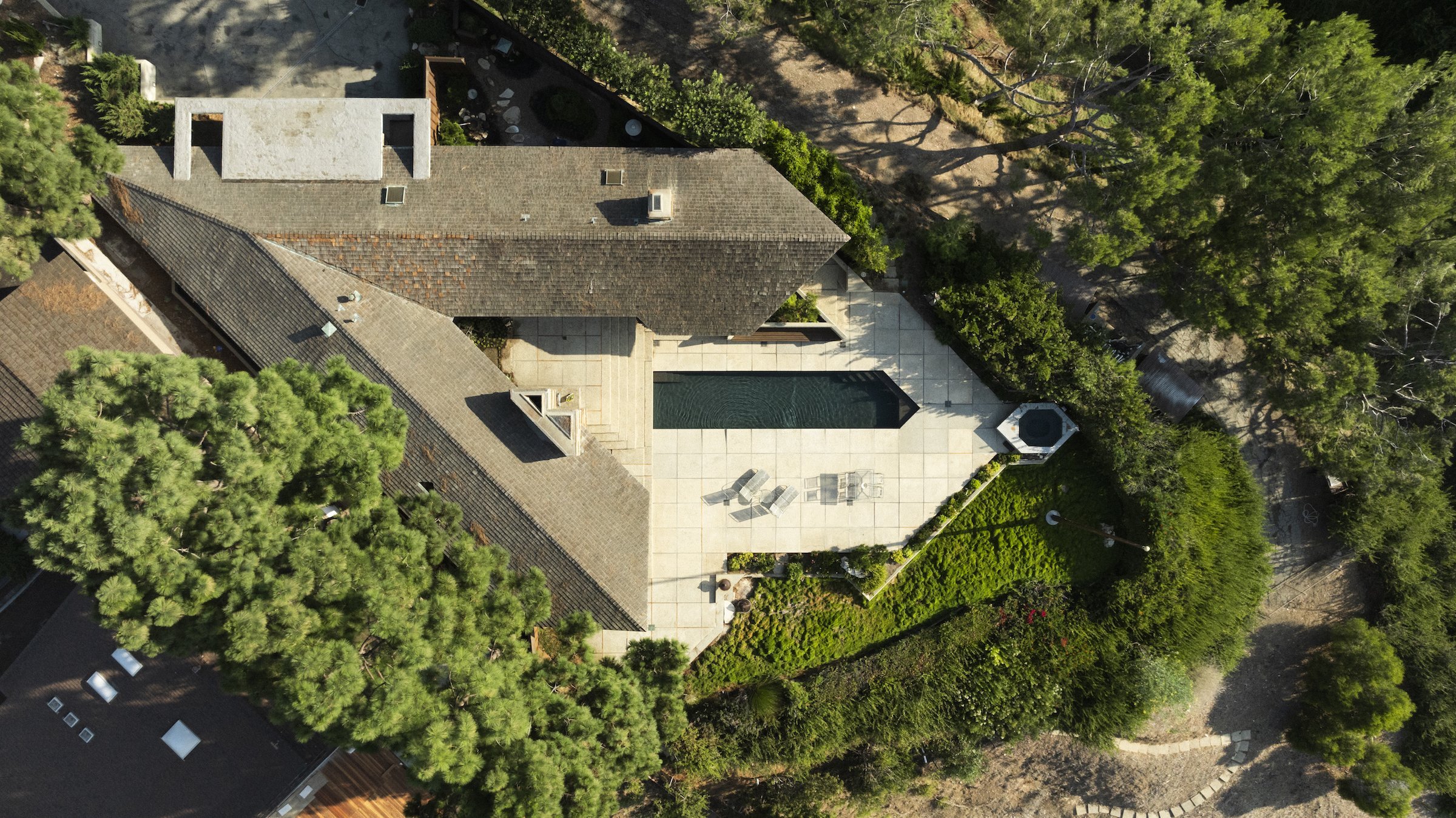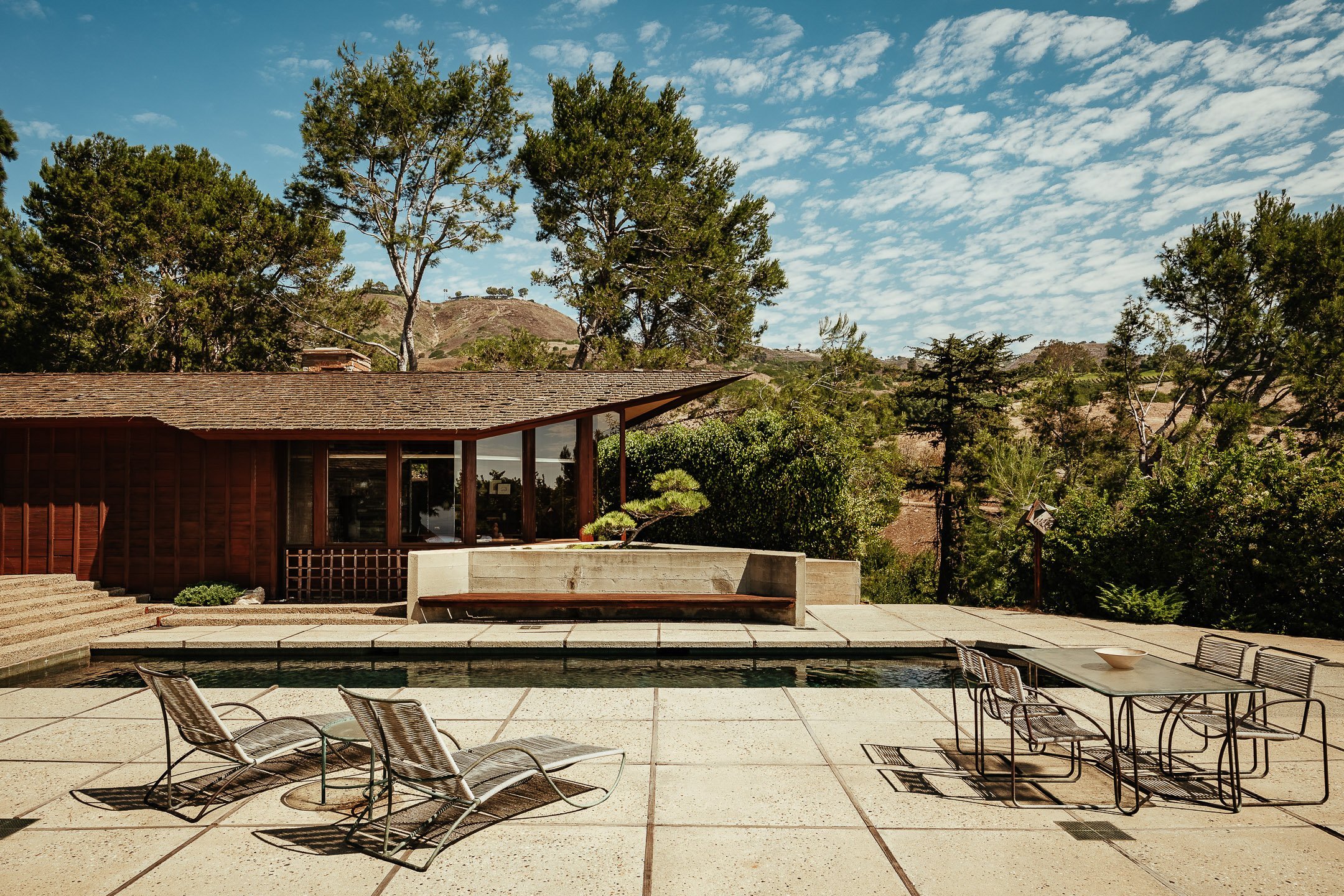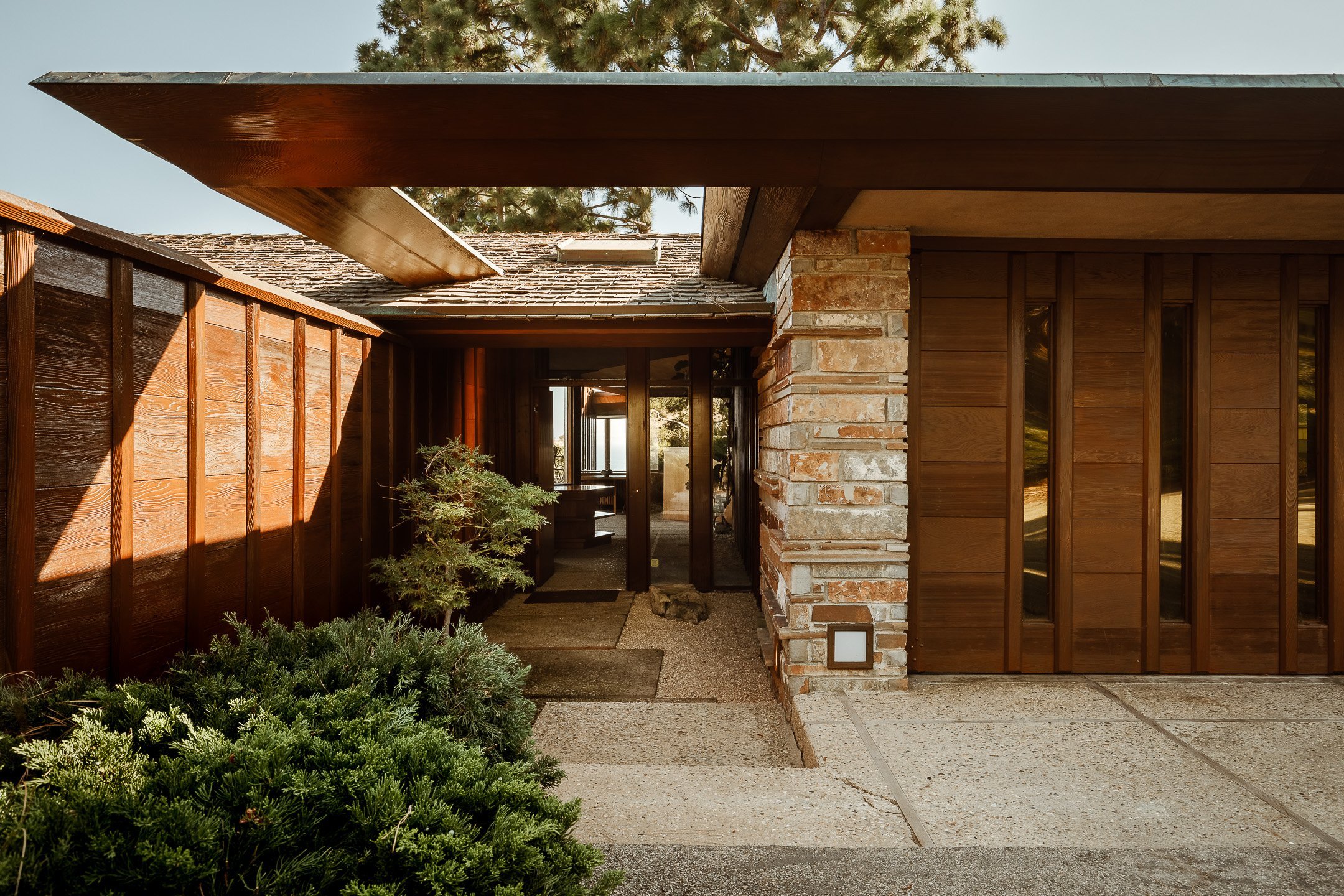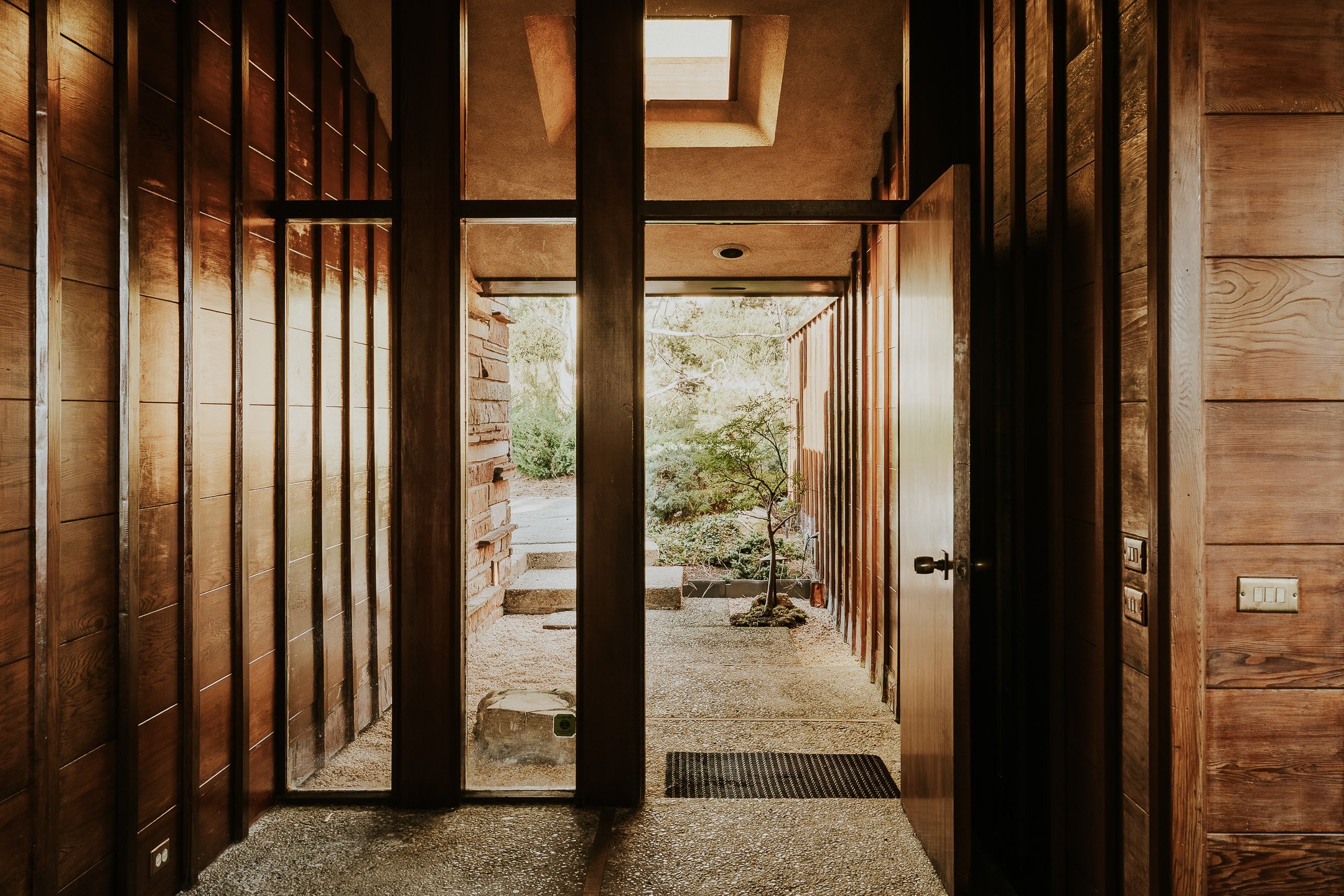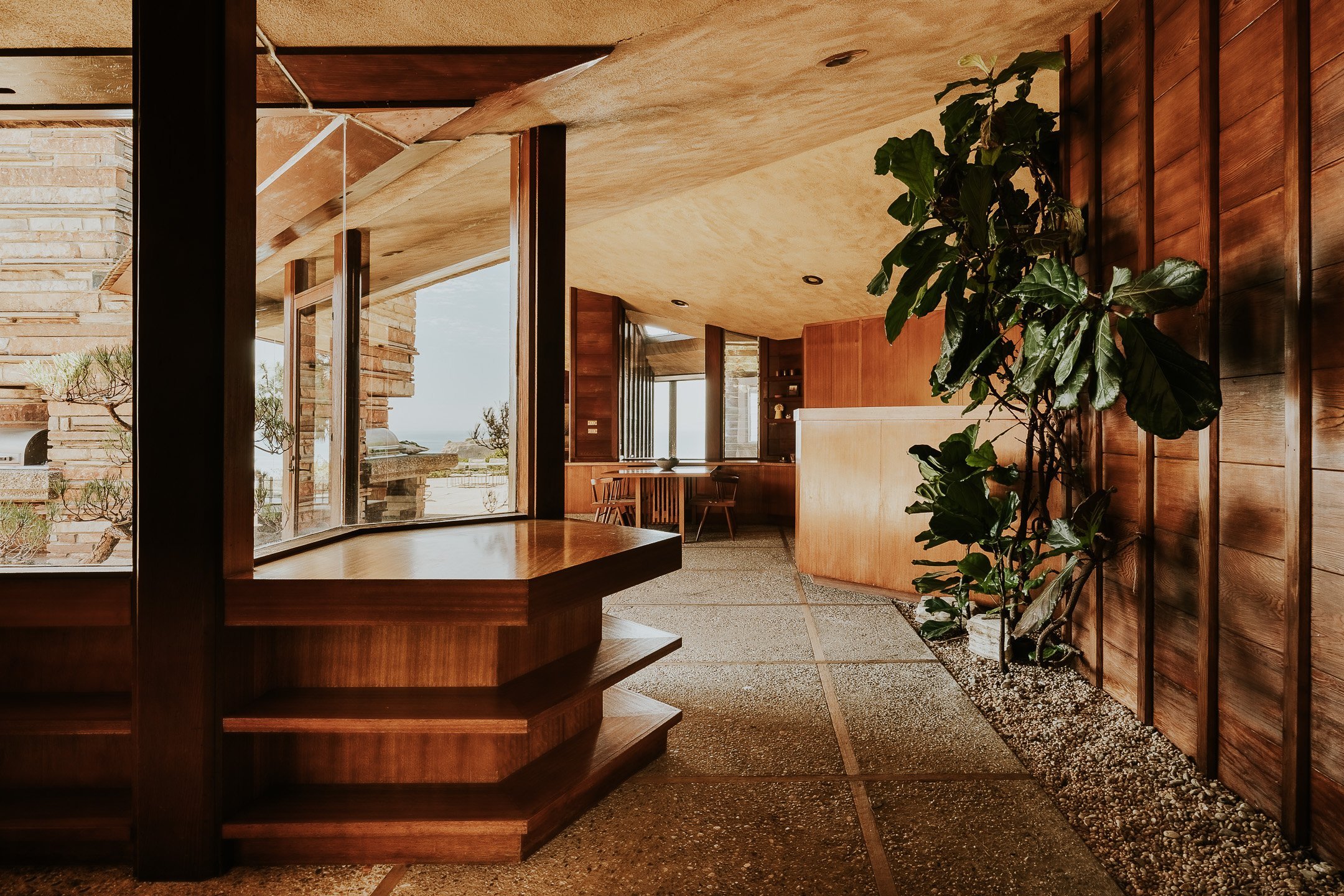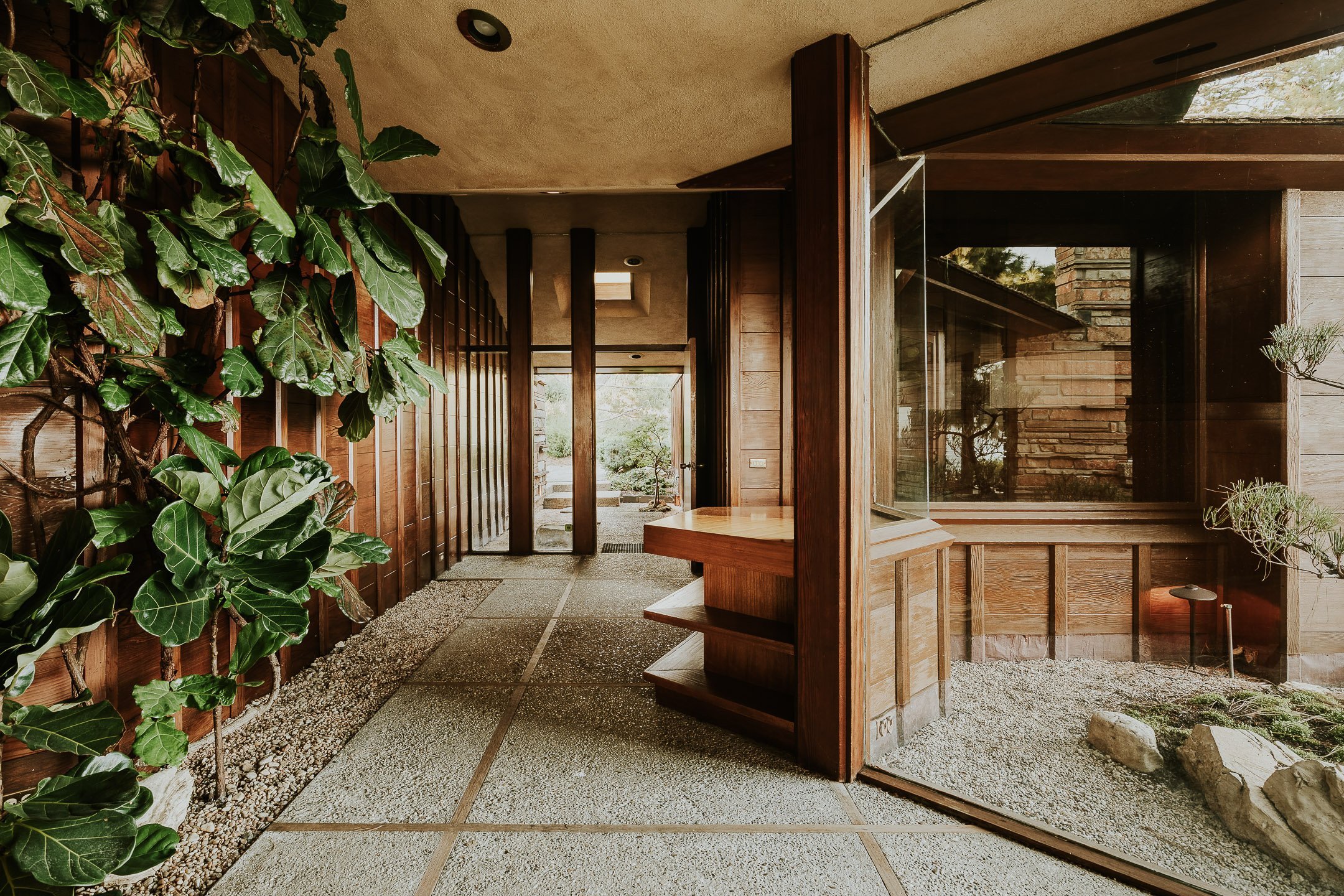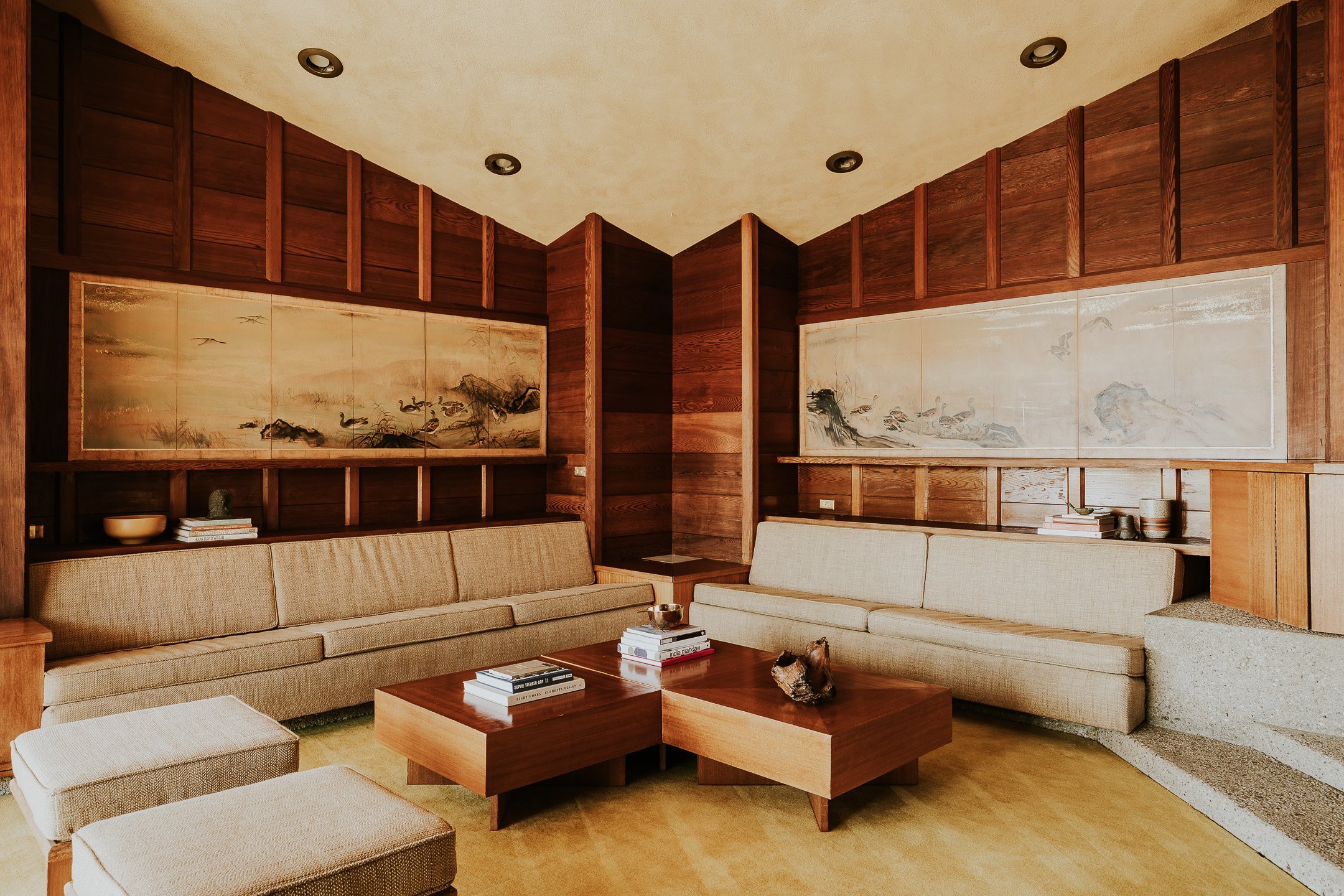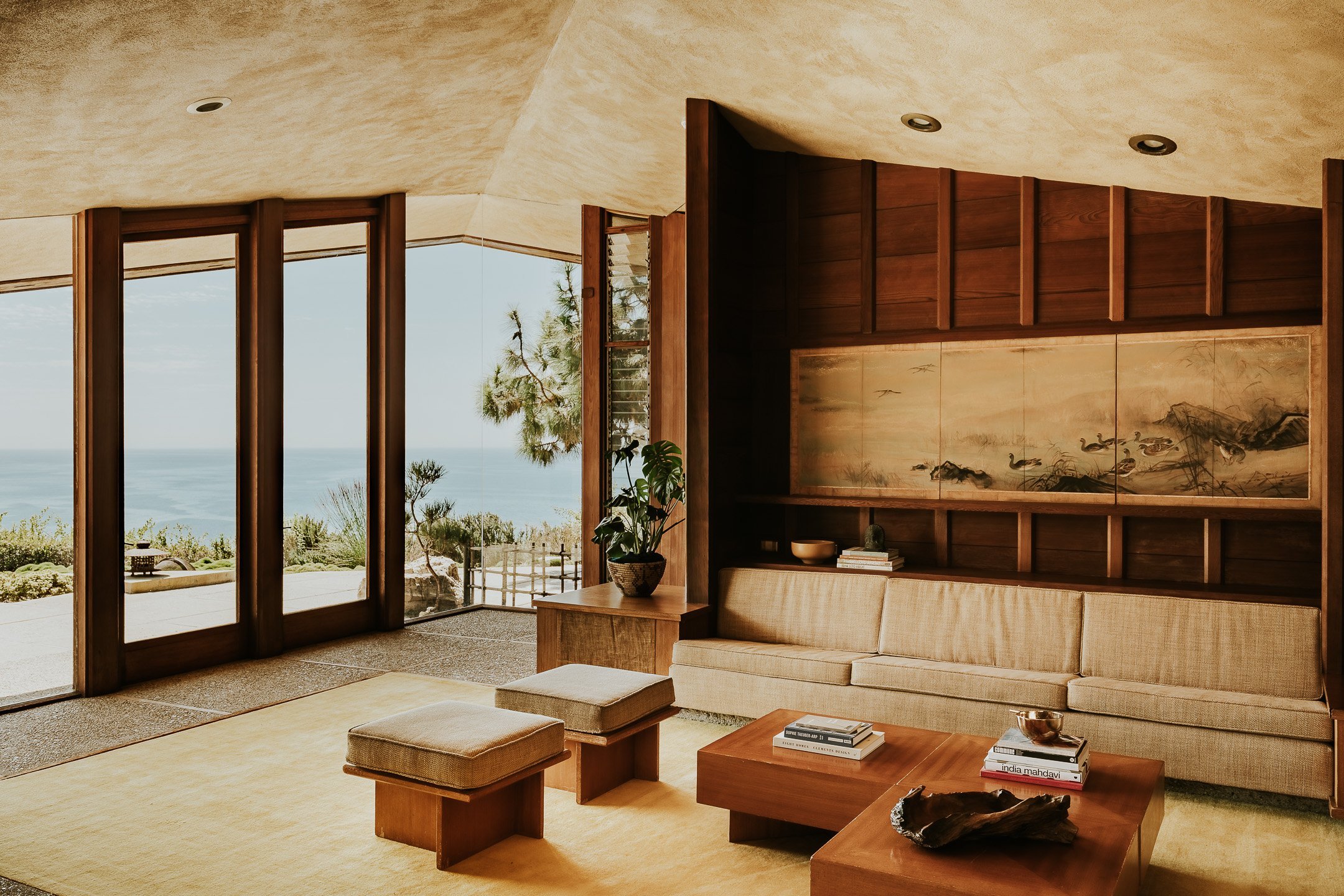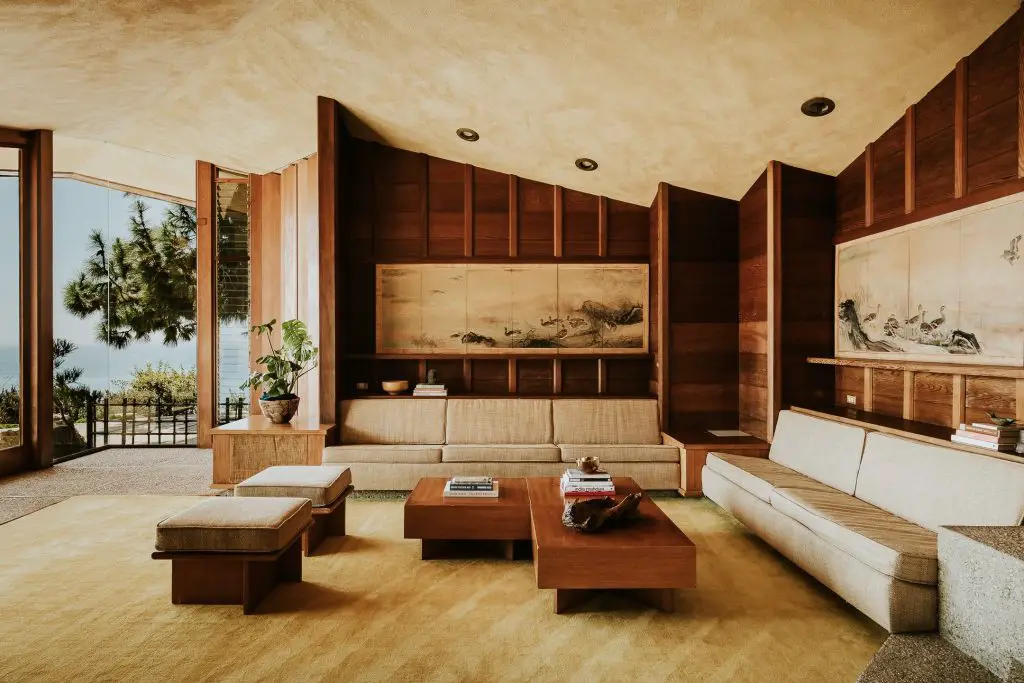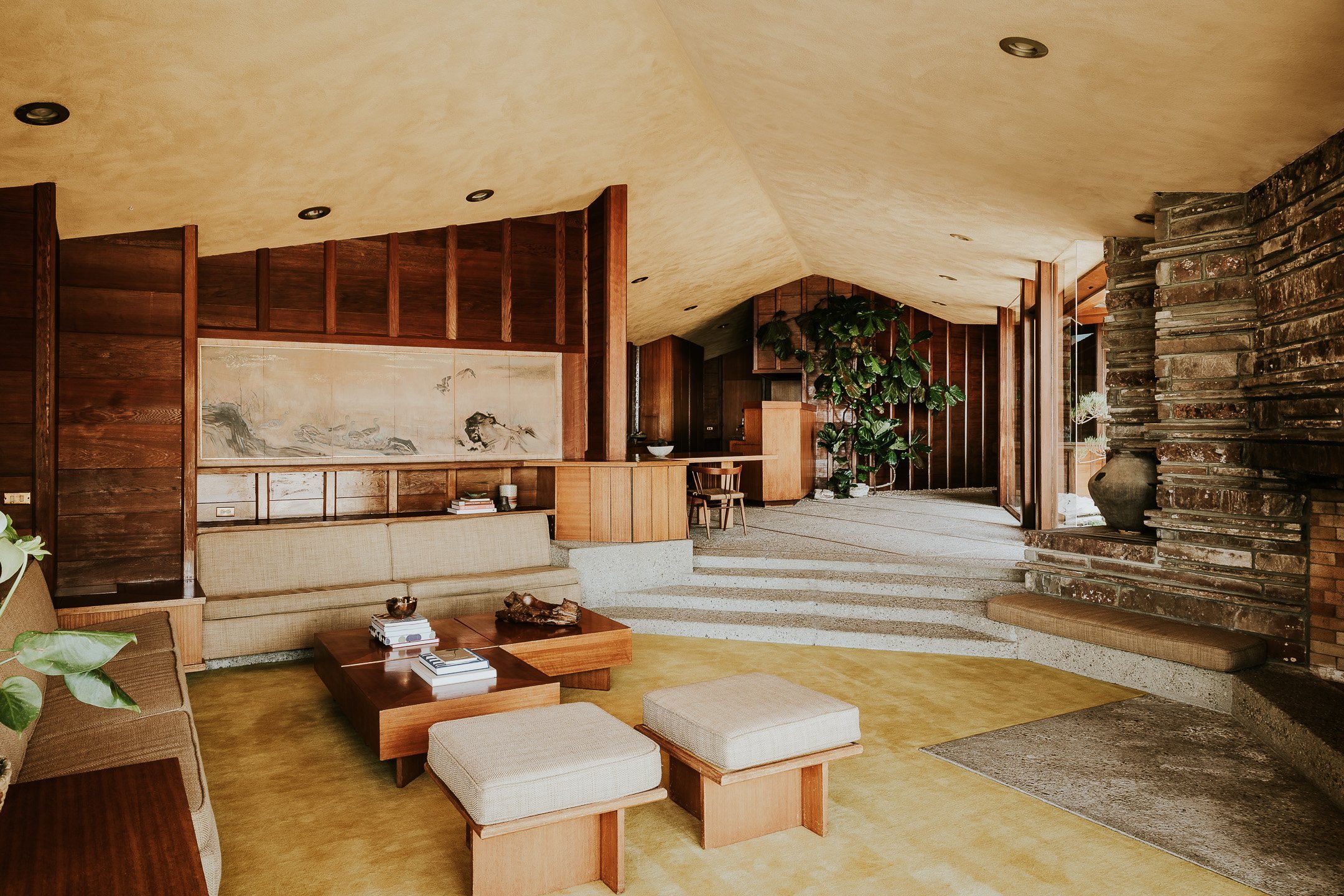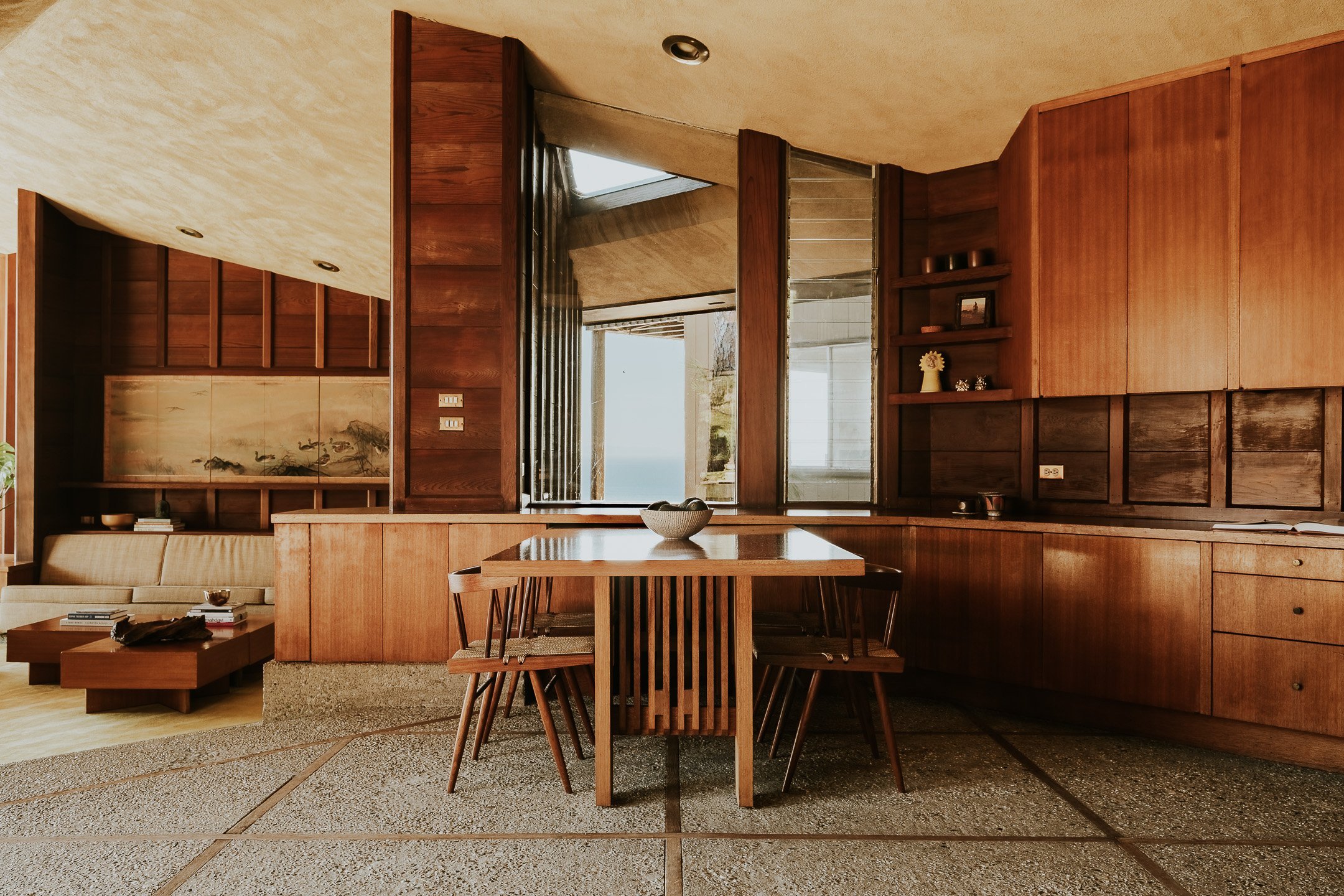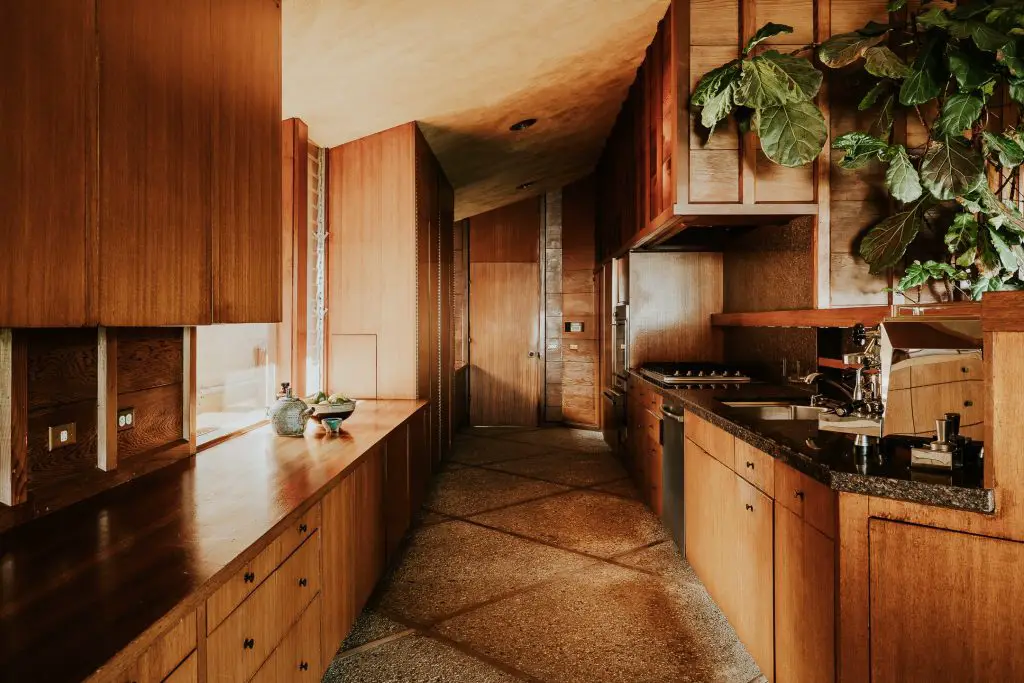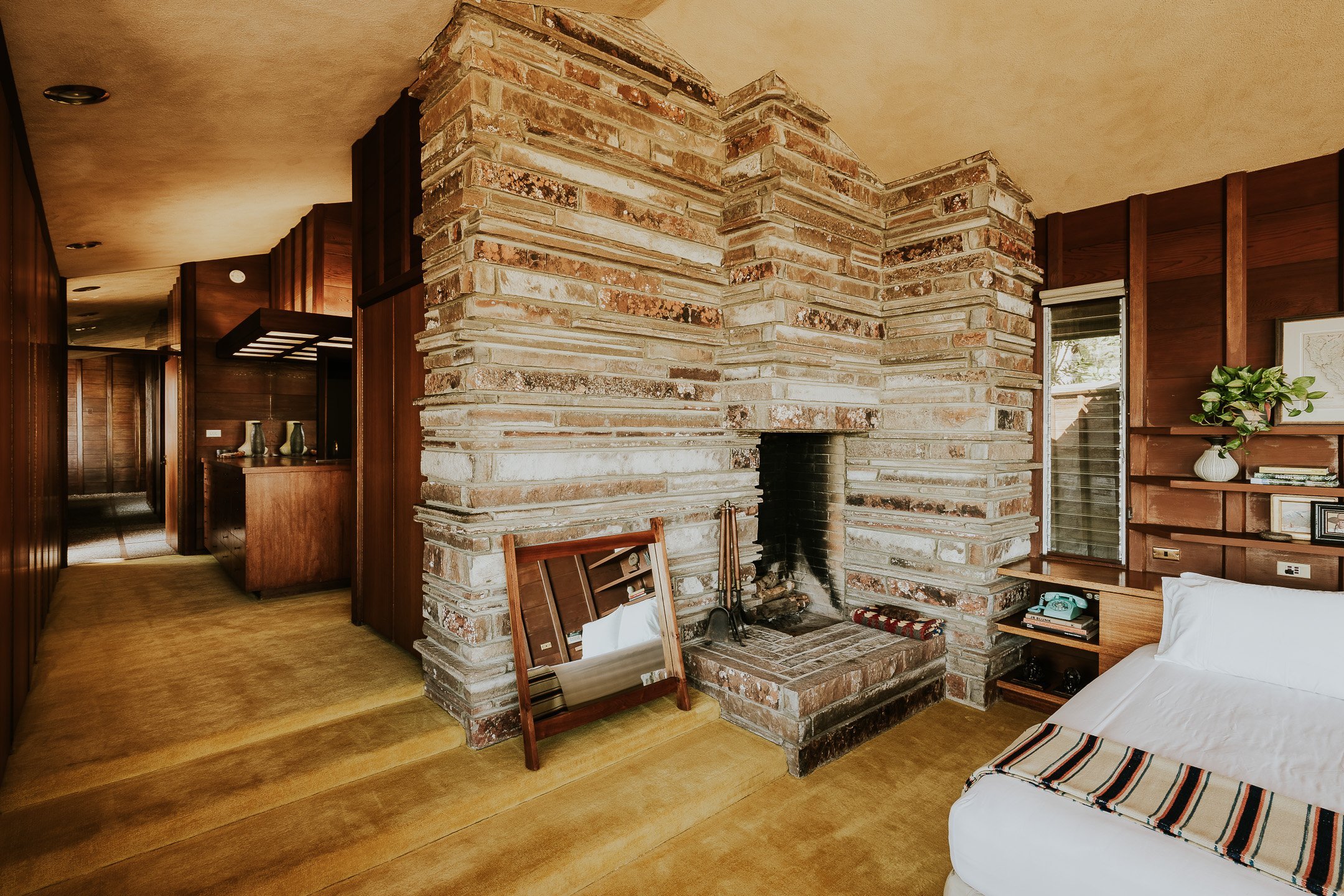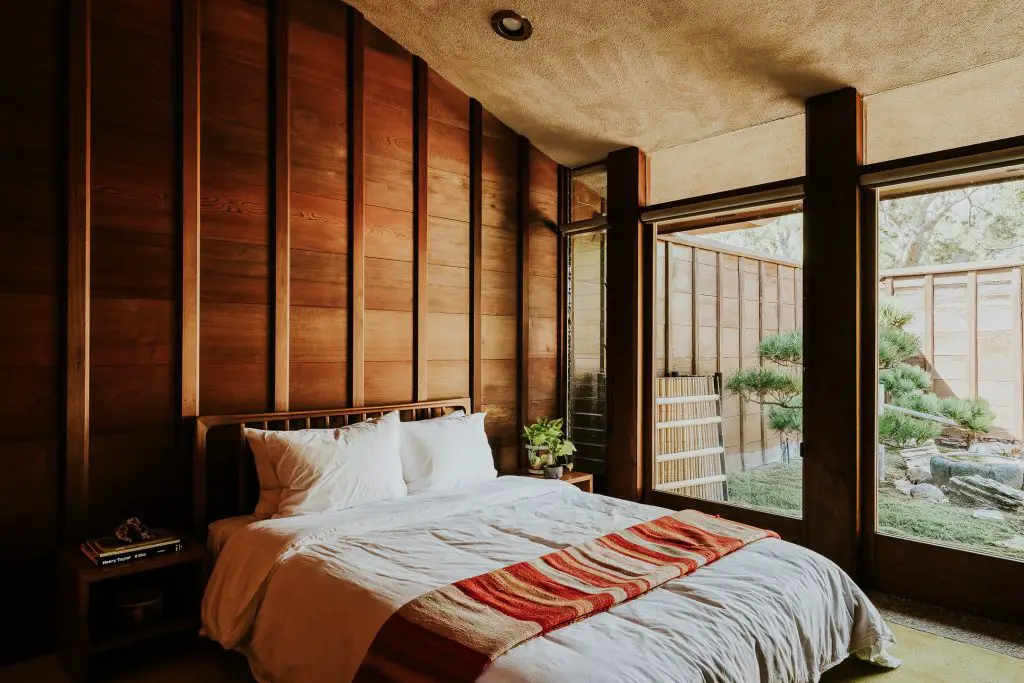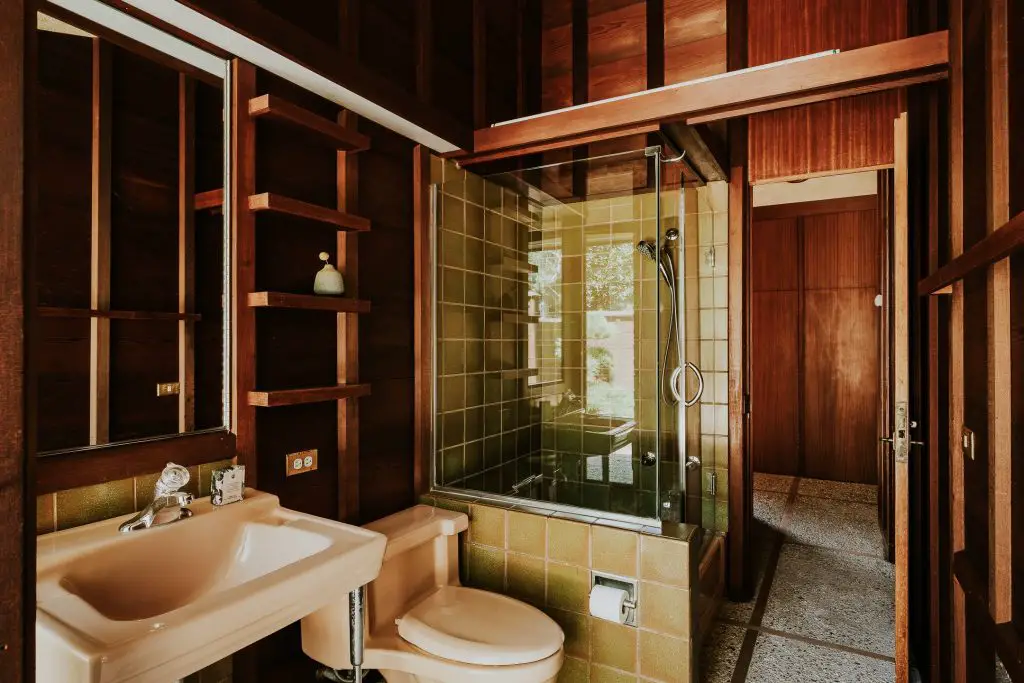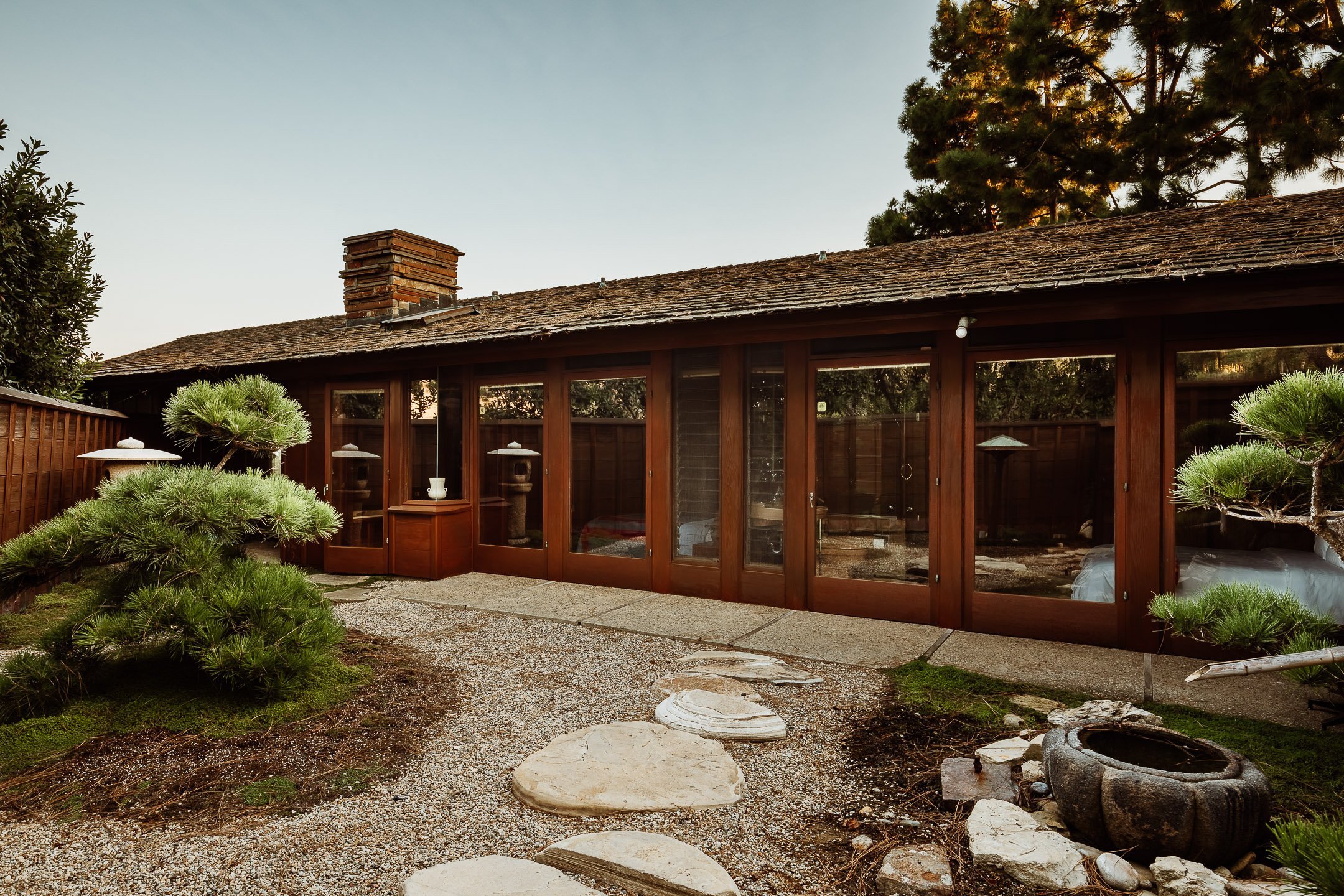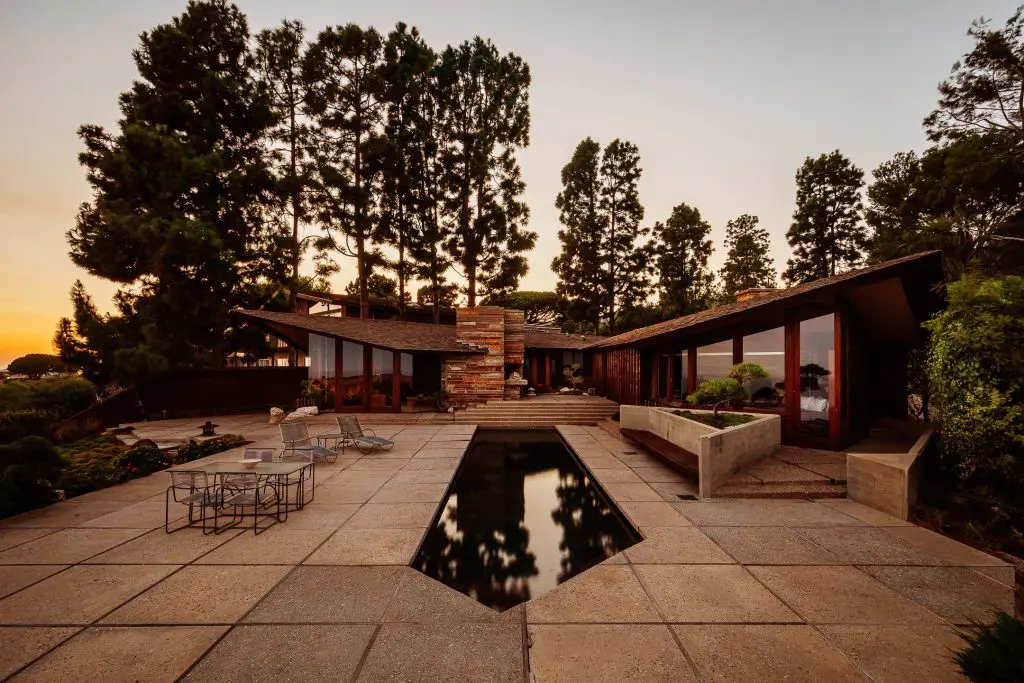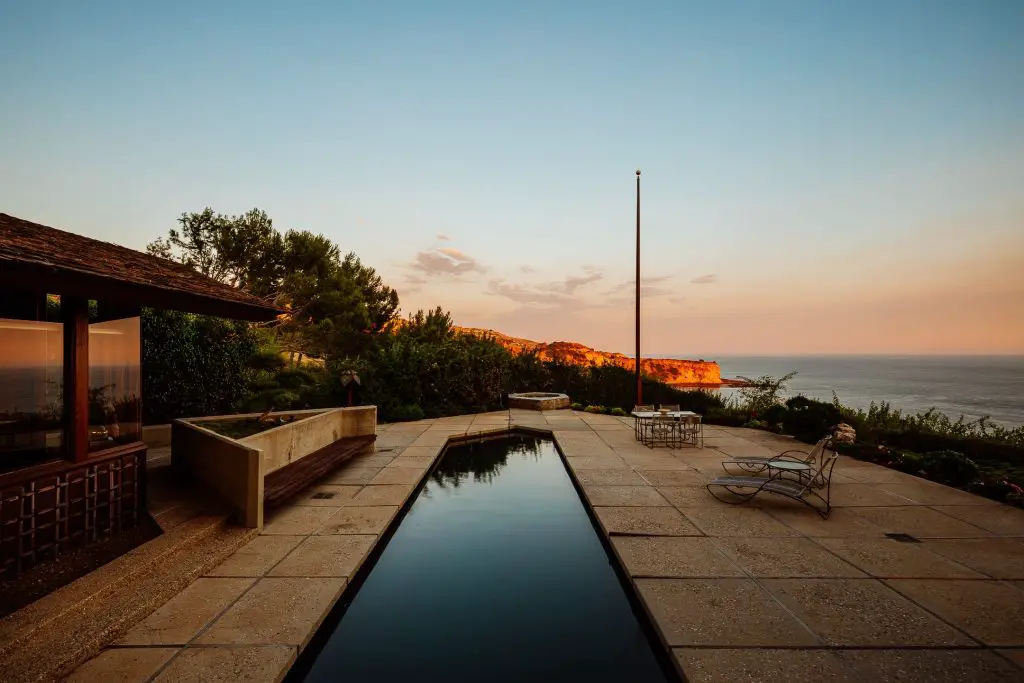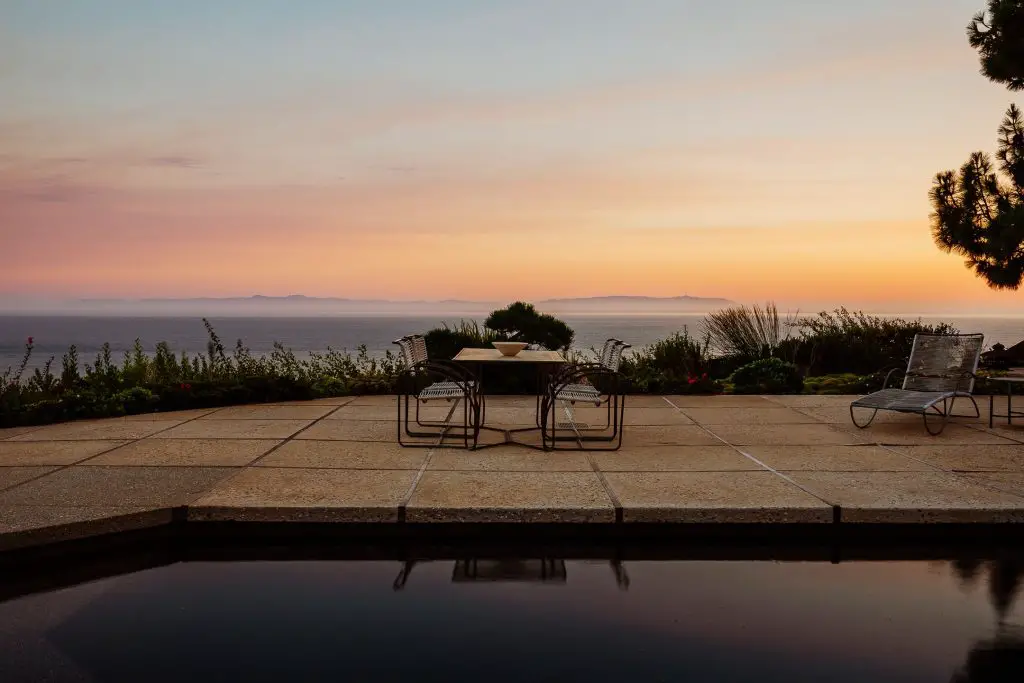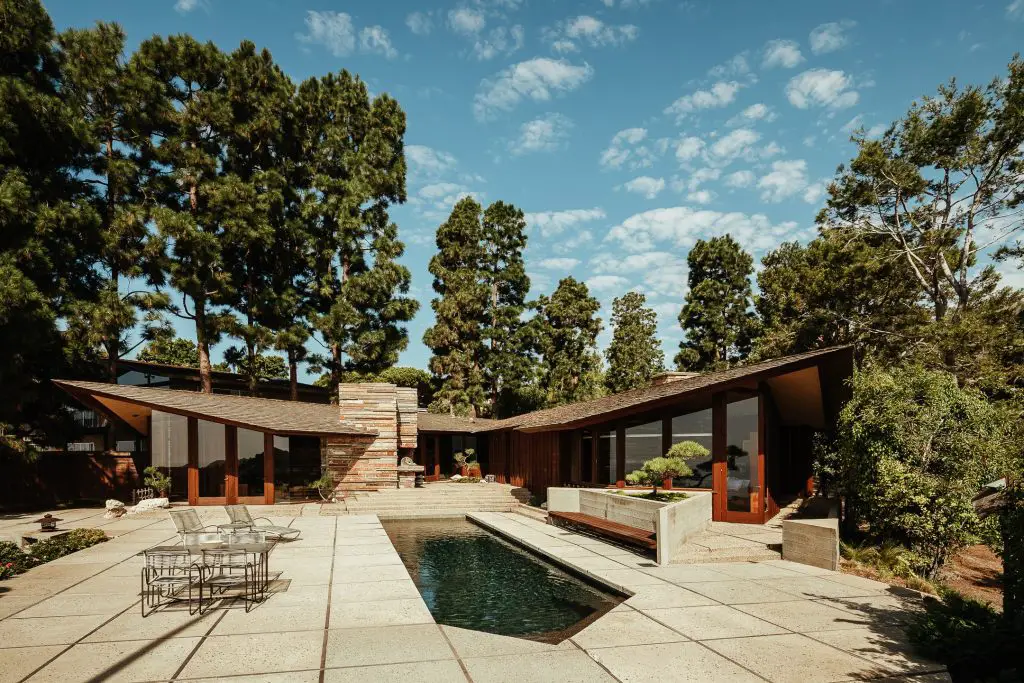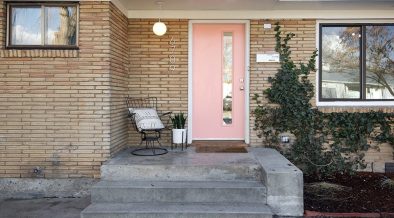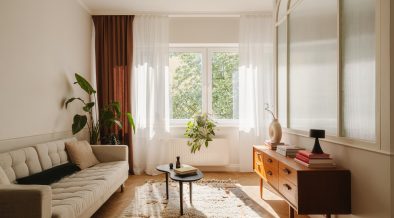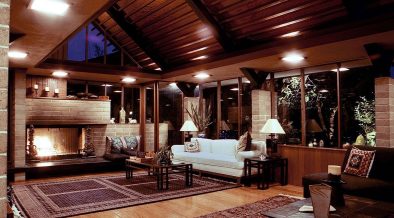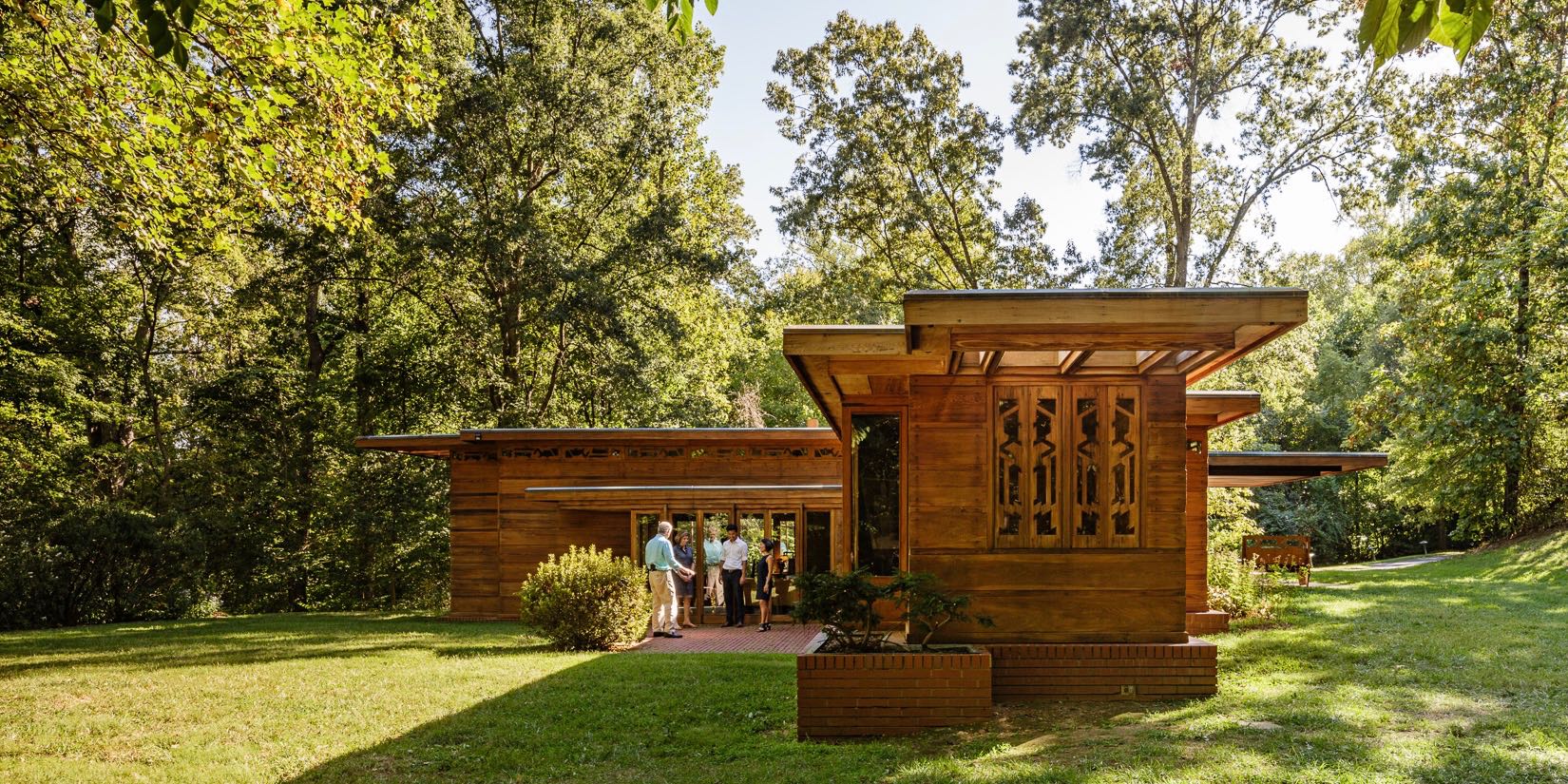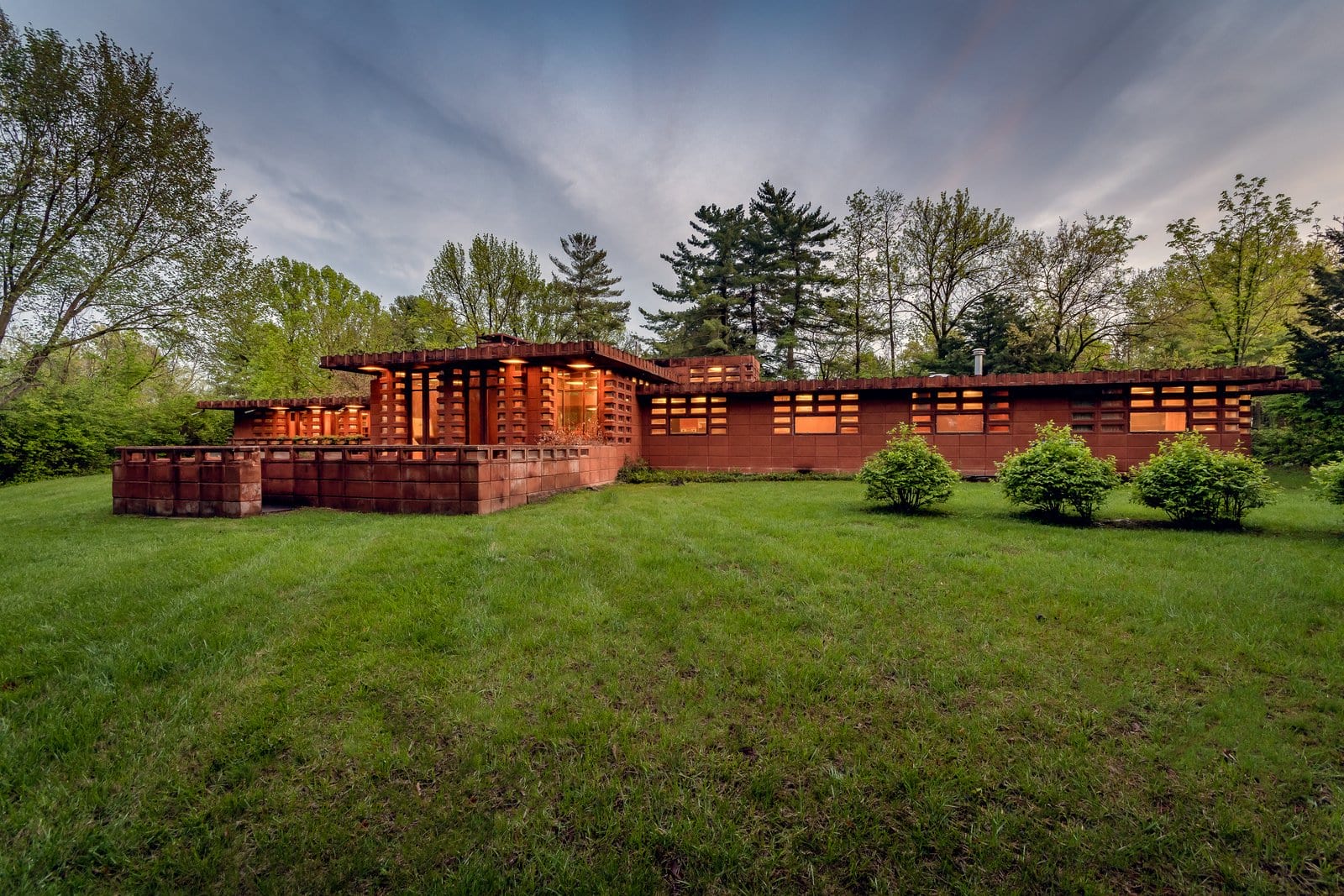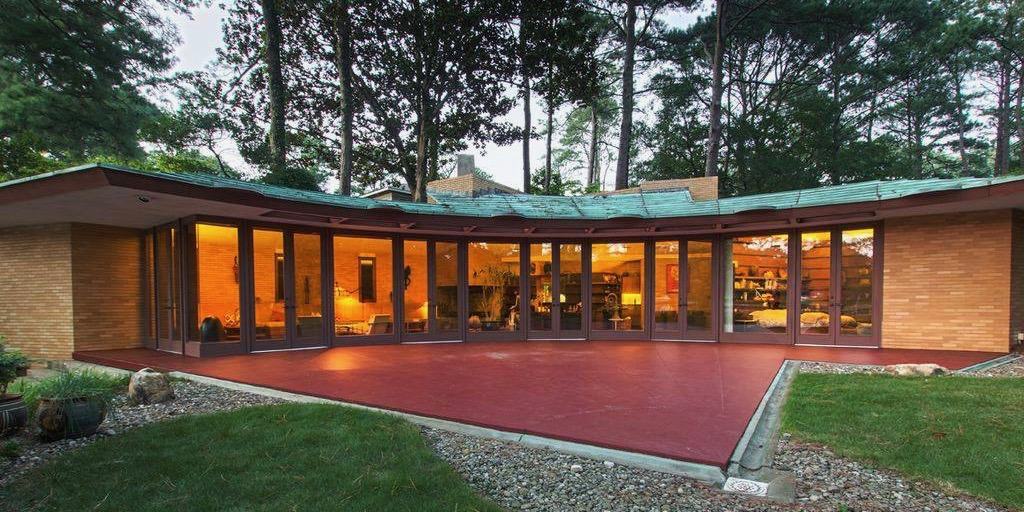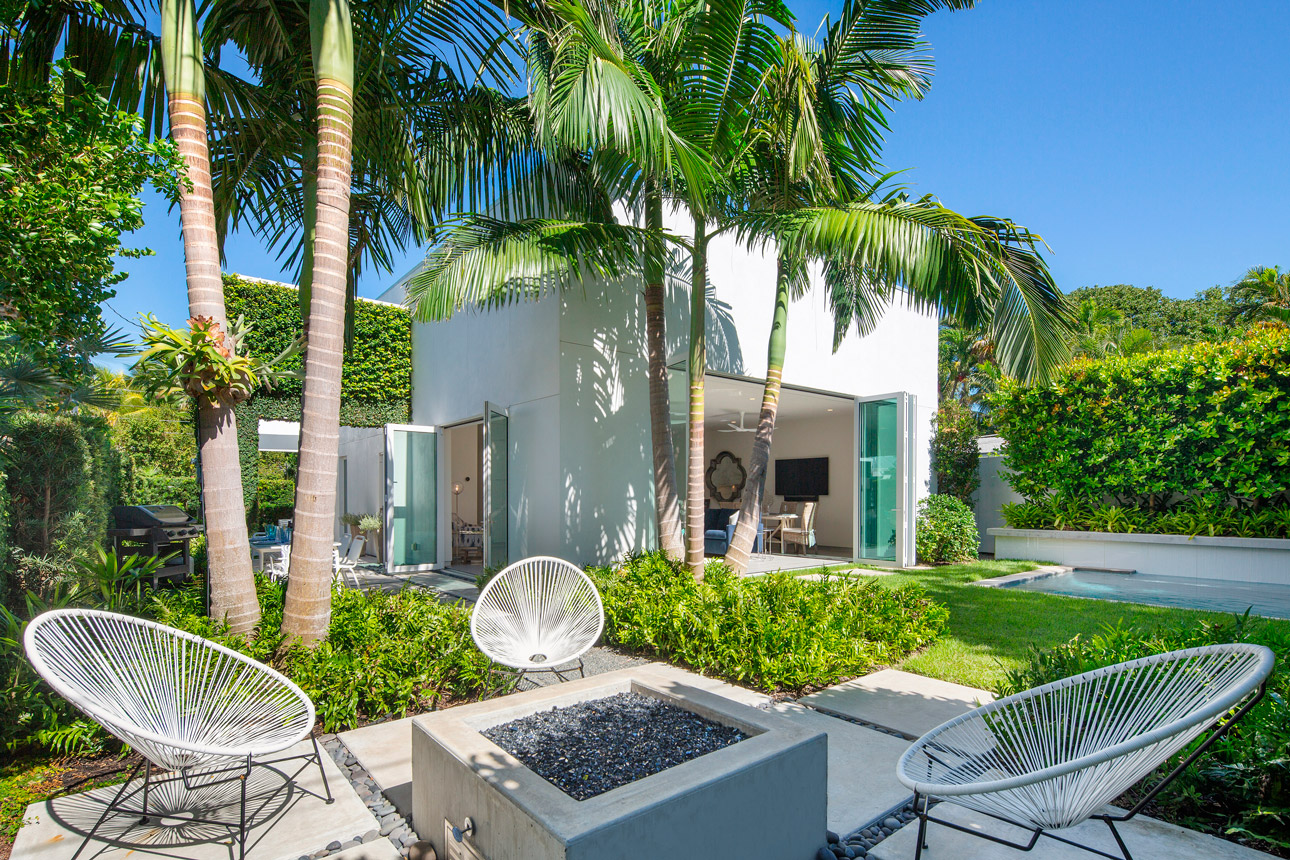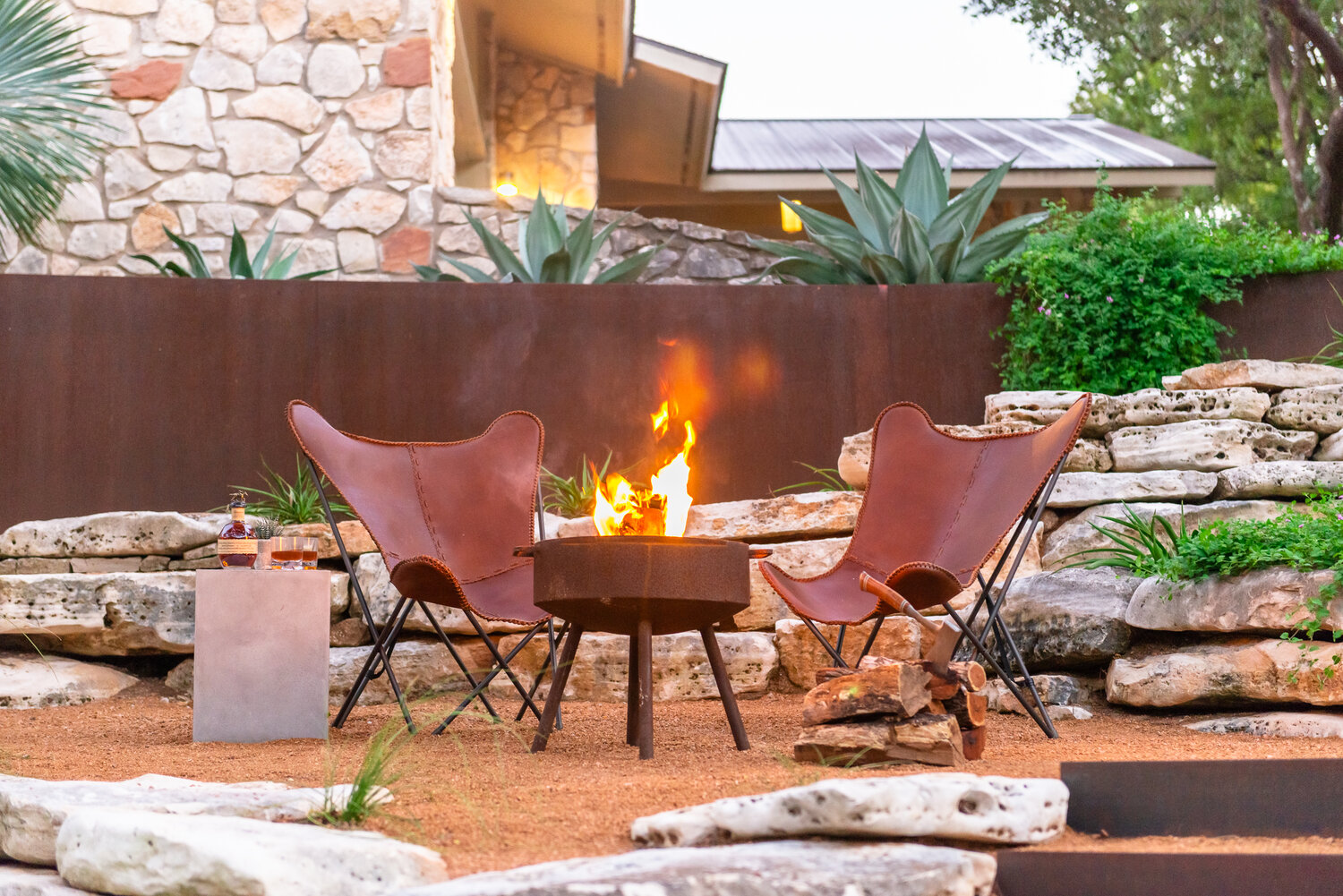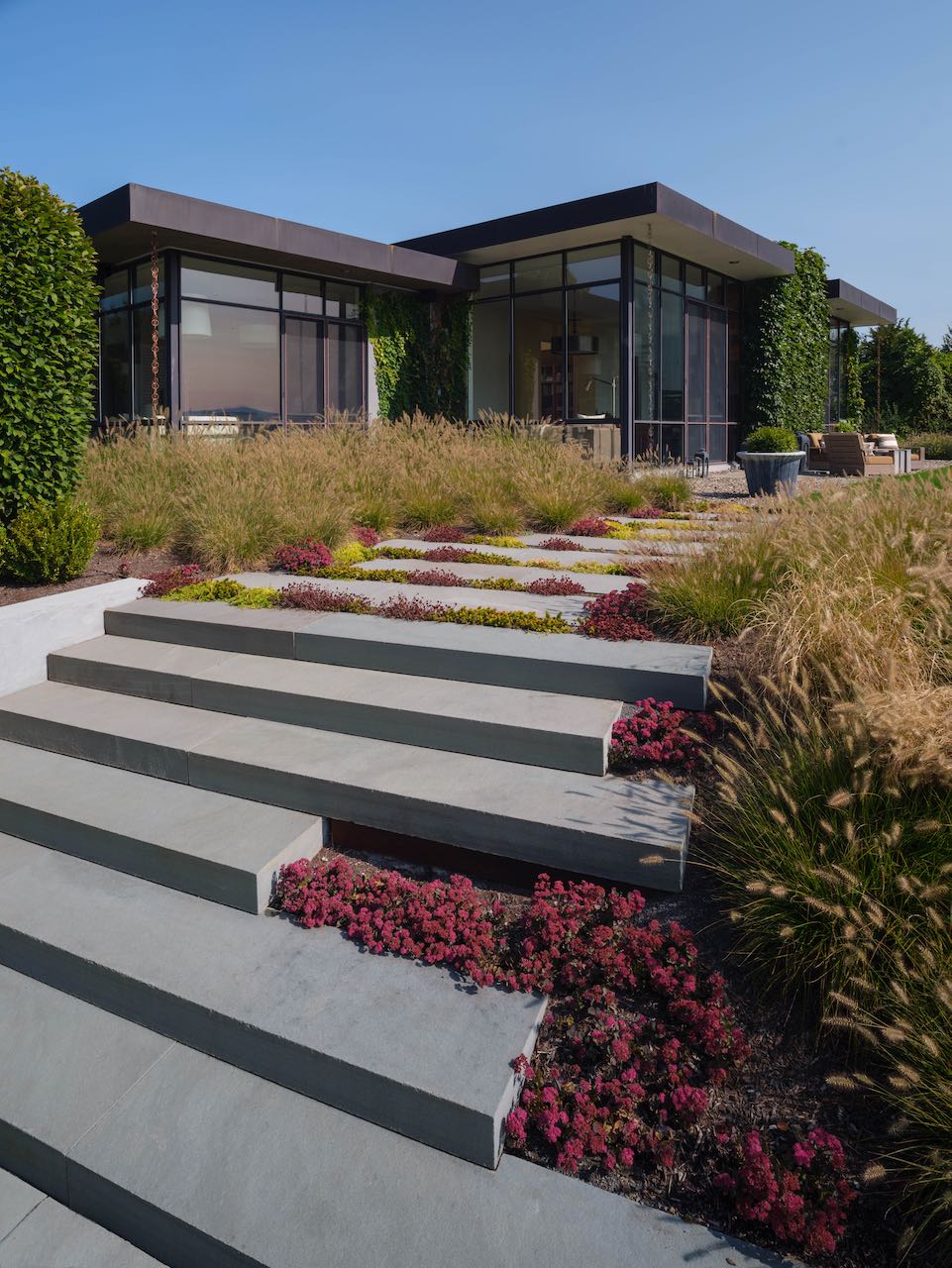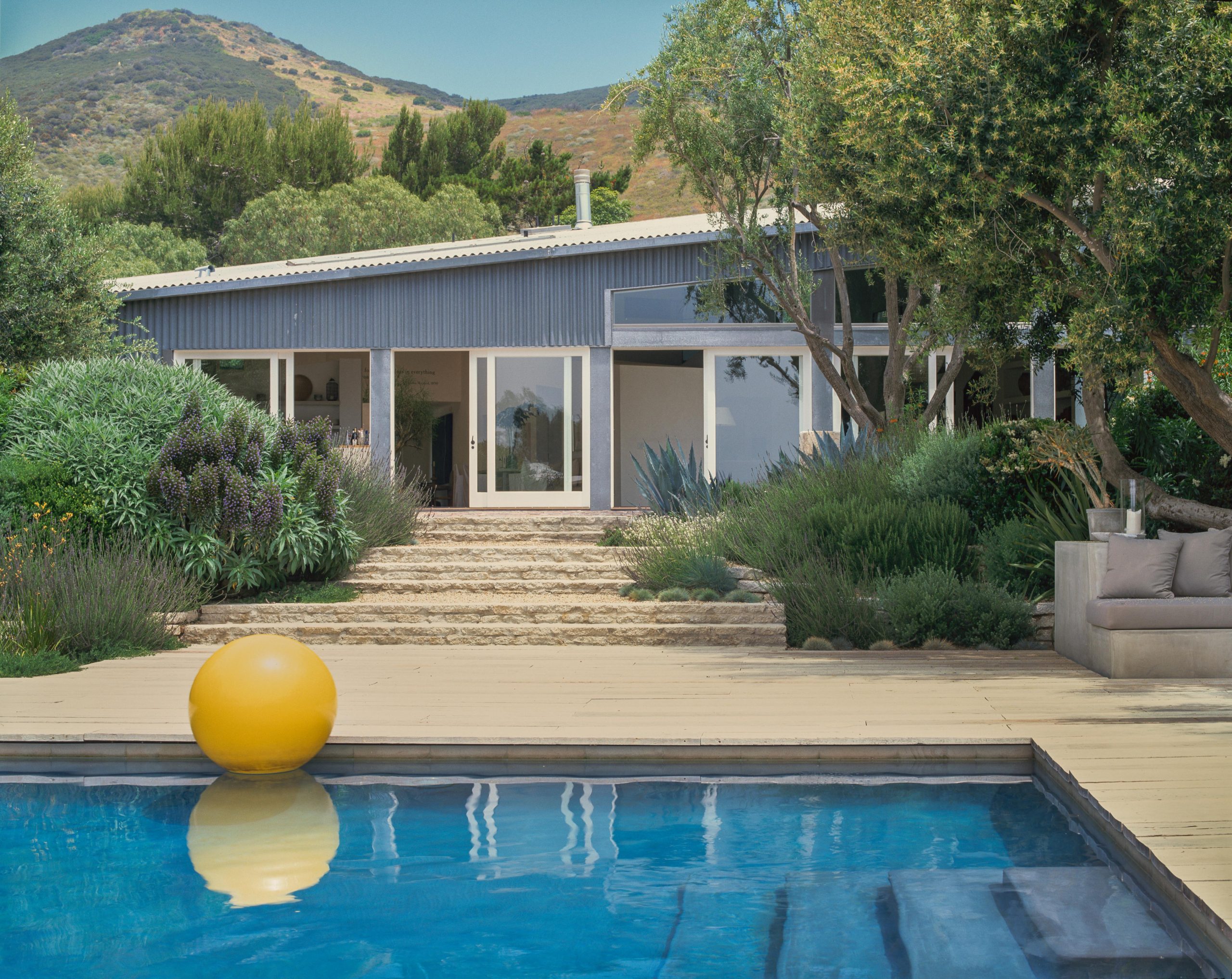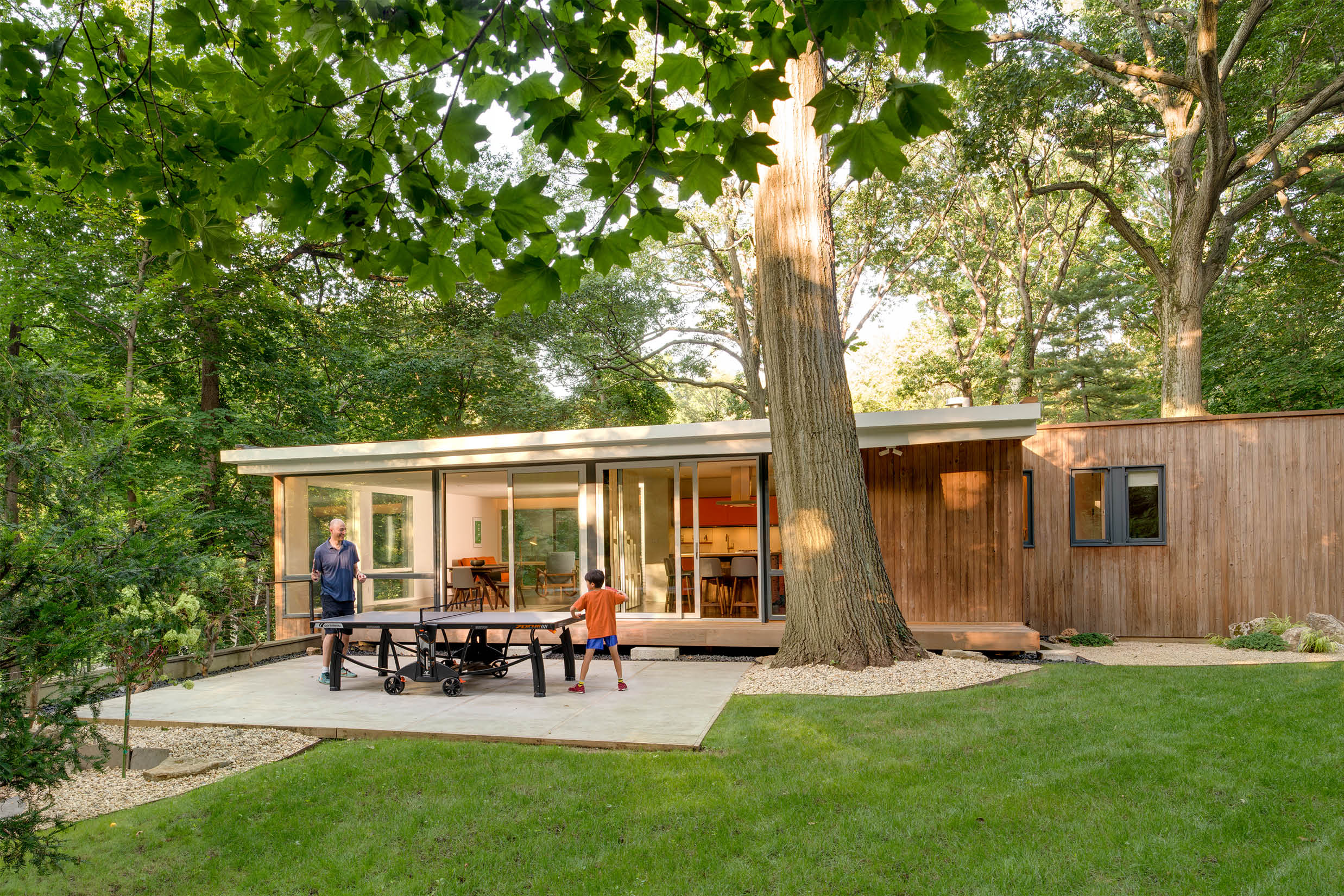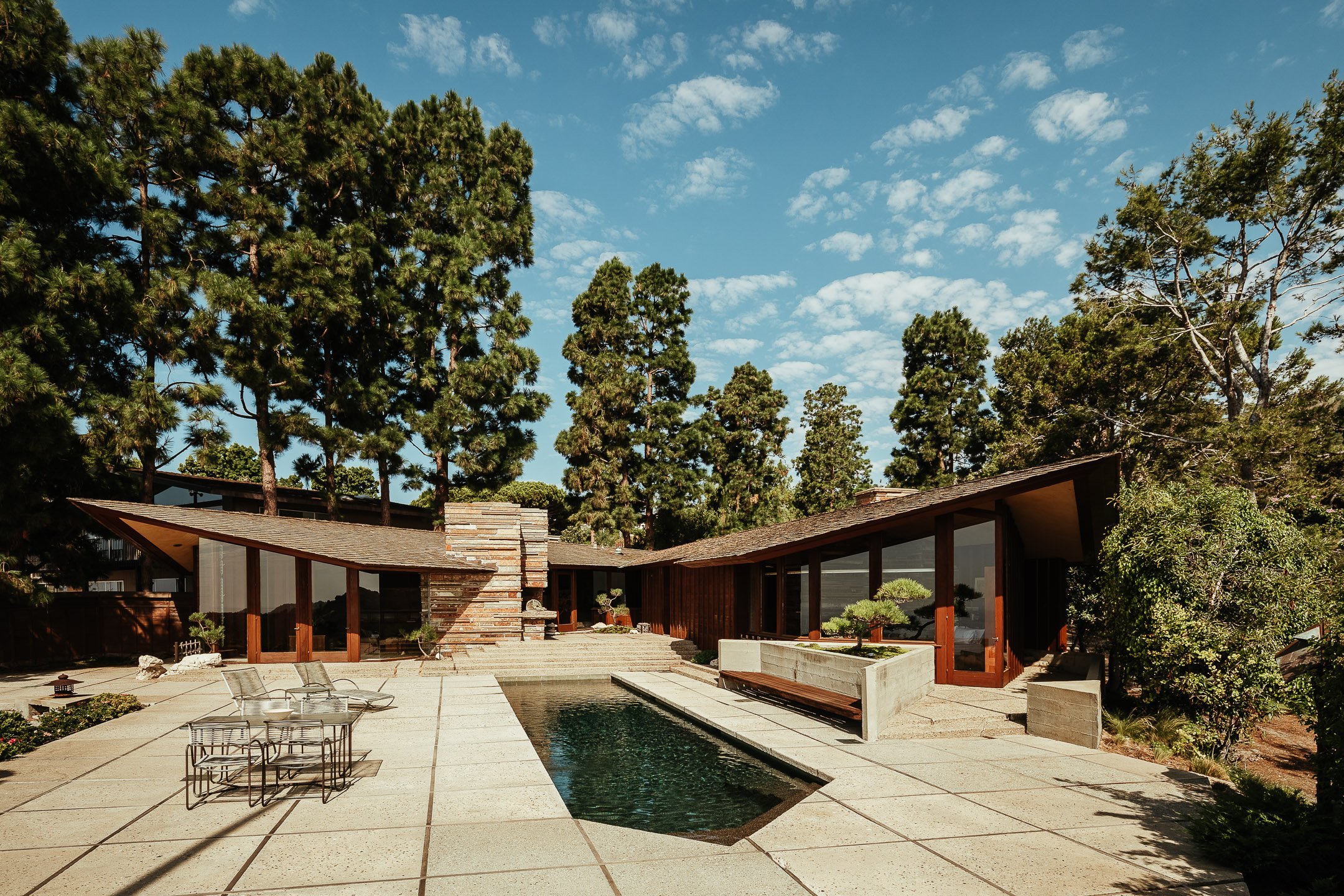
The Judge & Jeannie Anderson Residence sits above Abalone Cove in Palos Verdes, California. Designed in 1959 by Aaron G. Green FAIA, the home blends nature, structure, and light. It’s a rare, intact example of Organic Modernism on the Southern California coast.
Green trained under Frank Lloyd Wright and later became his West Coast representative. He was the only apprentice Wright named as an associate. While Wright’s influence is clear, Green developed his own voice. He embraced the land and prioritised flow over formality.
The house unfolds in a V-shaped plan. A recessed entrance leads to two gabled wings. One holds the private quarters. The other opens into the shared living areas. Glass walls and deep overhangs frame ocean views and invite daylight.
Curtis Besinger described it well in House Beautiful (1963): “These [walls and mullions] do not seem so much to shut in and contain the space as to shelter it, give it definition, and suggest its use.” The spaces connect seamlessly. The living room steps down with the slope of the land. Built-in seating surrounds a massive stone fireplace. Mitered glass corners eliminate visual barriers. Nature is always present.
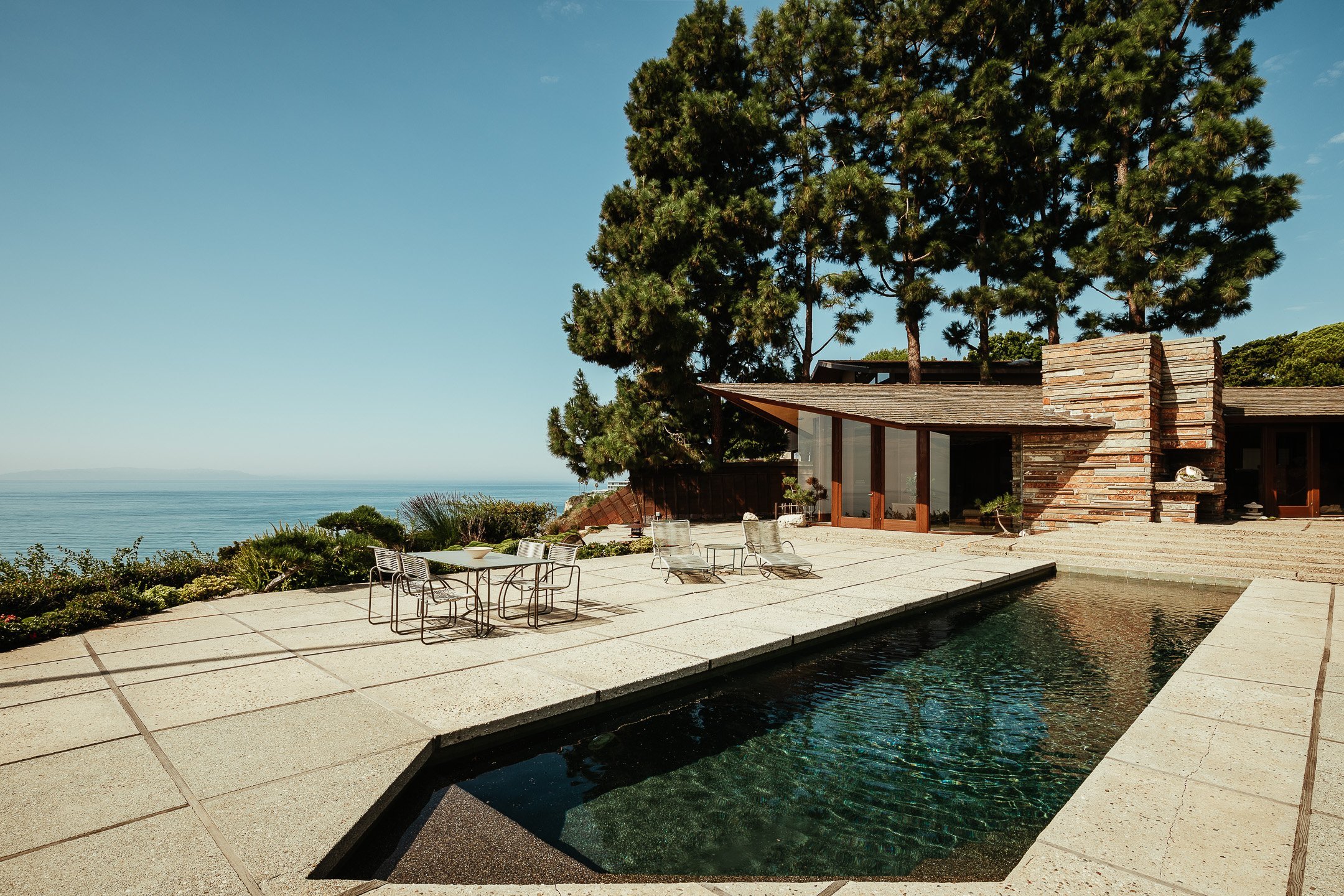
The kitchen disappears into custom cabinetry. Green designed much of the furniture. The dining area opens directly to the outdoors. Rough concrete floors, embedded with pebbles, continue the material language of the exterior.
Alan Hess, architect and historian, explains: “Almost wherever you are in the house, you feel like you’re outside.” That connection defines the project. Two guest bedrooms and their baths face a quiet Japanese garden. The primary suite looks to the Pacific. Monumental glass doors open the room to the view. A stone fireplace offers balance and warmth.
In 2003, Eric Lloyd Wright updated the house. He expanded the primary bath and added a pool and spa. All changes respected Green’s original design and material palette.
This house shows Green’s mastery. It proves his role in shaping Southern California’s architectural legacy. “This is important architecture,” says Hess. “It’s part of the region’s heritage—and it’s been beautifully preserved.” Though often linked to Northern California, Green built some of his best work here. The Anderson Residence is one of them. It’s not loud. It doesn’t compete with the site. It simply belongs.
Green didn’t chase style. He designed for life, climate, and land. The result is a quiet, enduring modernism—at once open, warm, and rooted. This is Organic Modernism at its best.
This incredible home is currently for sale on Modern California House.
